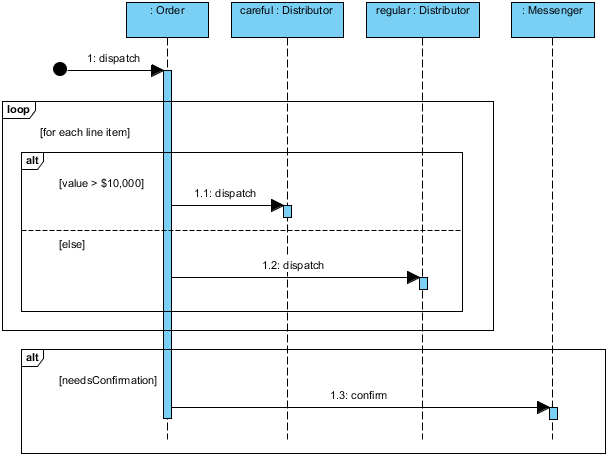
Otherwise, click Add button to add a new operand and then name it.
To remove an operand, select the target operand from Operands and click Remove button. Move the mouse over the combined fragment and select Operand > Manage Operands… from the pop-up menu. Click OK button.Īs a result, the area of covered lifelines is extended or narrowed down according to your selection.Īfter you’ve created a combined fragment on the messages, you can also add or remove operand(s). In the Add/Remove Covered Lifelines window, check the lifeline(s) you want to cover or uncheck the lifeline(s) you don’t want to cover. Move the mouse over the combined fragment and select Add/Remove Covered Lifeline… from the pop-up menu. loop) from the popup menu.Ī combined fragment of selected type will be created to cover the messages.Īfter you’ve created a combined fragment on the messages, you can add or remove the covered lifelines. To create combined fragment to cover messages, select the messages, right-click on the selection and select Create Combined Fragment and then select a combined fragment type (e.g. The picture below shows when drag the magnet upwards, shapes below dragged position are pulled upwards. Shapes affected will be pulled to the direction you dragged. To use magnet, click the Selector on the toolbar, then select Magnet.Ĭlick on empty space of the diagram and drag towards top, right, bottom or left. You can also use magnet to pull shapes together. The picture below shows the message specify visit time is being swept downwards, thus new room is made for new messages. 
The picture below shows the actor Inspector Assistant is being swept towards right, thus new room is made for new lifelines. Shapes affected will be swept to the direction you dragged. To use sweeper, click the Selector on the toolbar, then select Sweeper.Ĭlick on empty space of the diagram and drag towards top, right, bottom or left. Sweeper helps you to move shapes aside to make room for new shapes or connectors. Using sweeper and magnet to manage sequence diagram When create message between lifelines/actors, activation will be automatically extended.

Enter its name and press Enter to confirm editing. A new lifeline will be created and connected to the actor/lifeline with a message.Select Message -> LifeLine from Resource Catalog.Release the mouse button at the place where you want the lifeline to be created.Press on the Resource Catalog button and drag it out.Move your mouse pointer over the source lifeline.To create lifeline, you can click LifeLine on the diagram toolbar and then click on the diagram.Īlternatively, a much quicker and more efficient way is to use Resource Catalog:

To create actor, click Actor on the diagram toolbar and then click on the diagram. The Location field enables you to select a model to store the diagram.
Enter the diagram name and description. In the New Diagram window, select Sequence Diagram. Select Diagram > New from the application toolbar. Perform the steps below to create a UML sequence diagram Visual Paradigm uml diagram tools. Managing requirements with Requirement ListĪ sequence diagram is a kind of UML diagram that is used primarily to show the interactions between objects that are represented as lifelines in a sequential order. #Visual paradigm sequence diagram to communication diagram how to
How to draw a Interaction Overview Diagram in UML. How to draw a Composite Structure Diagram in UML. How to draw a Deployment Diagram in UML. Splitting a control flow in Activity Diagram. 
How to draw a State Machine Diagram in UML.How to draw a Communication Diagram in UML.








 0 kommentar(er)
0 kommentar(er)
